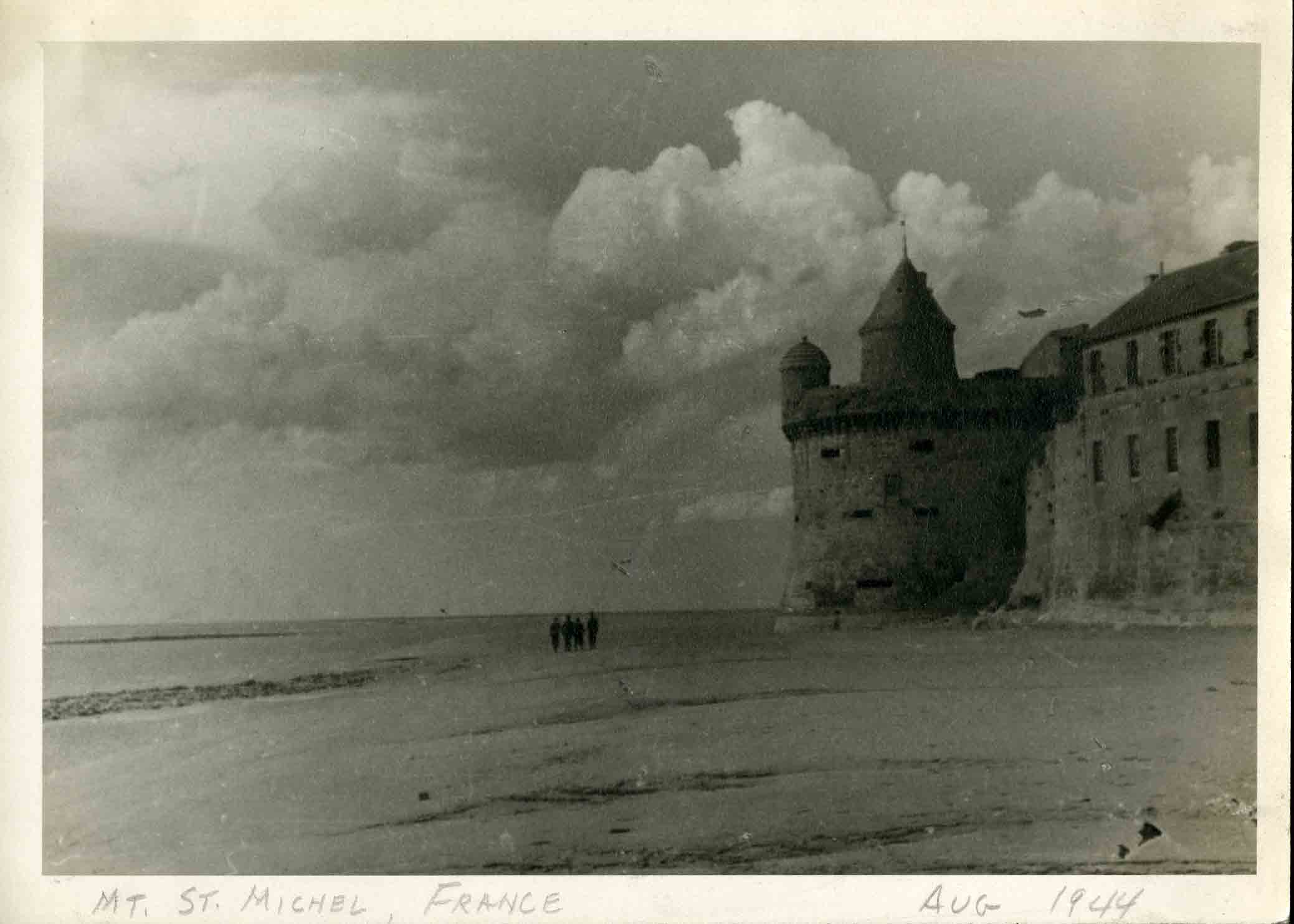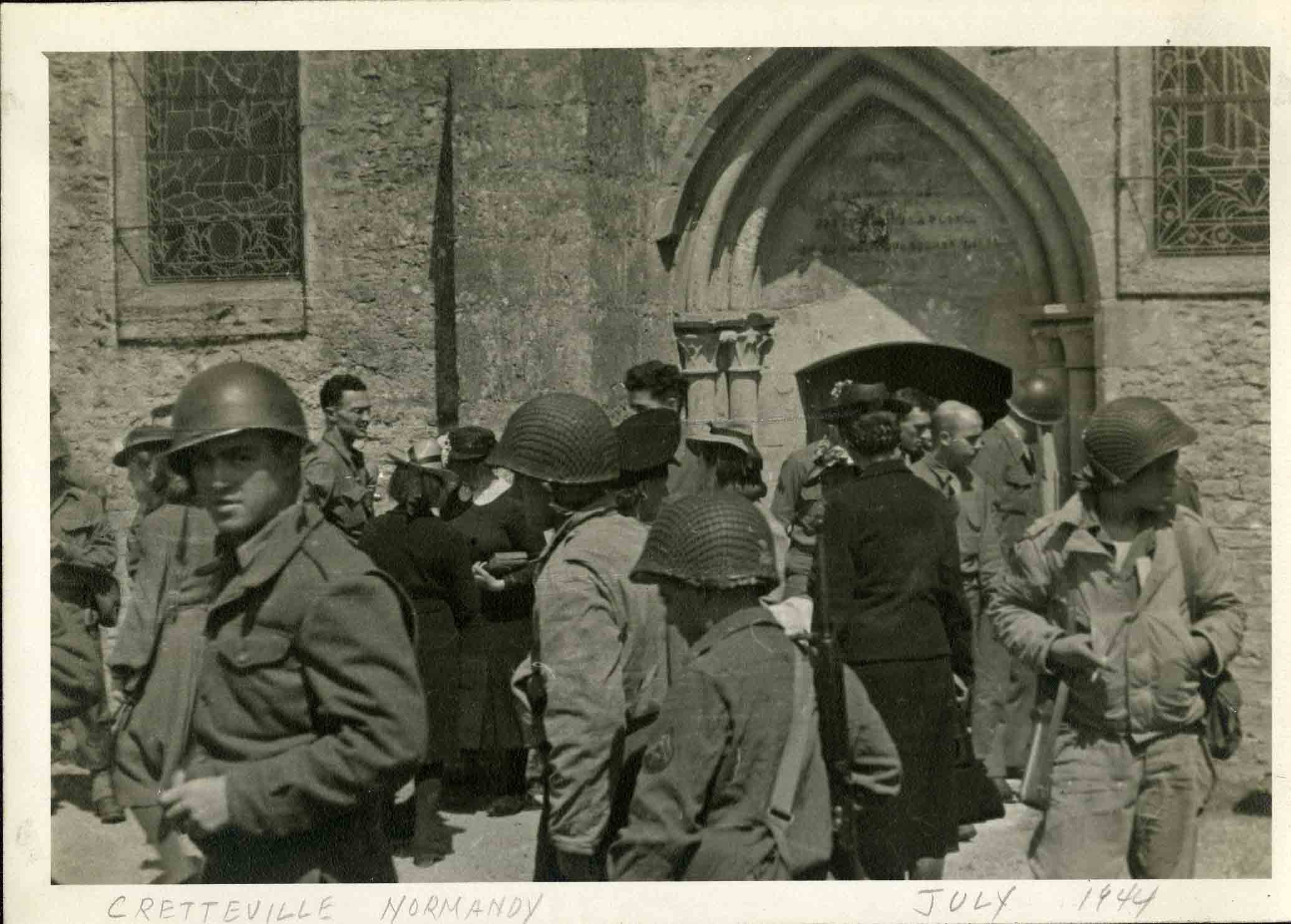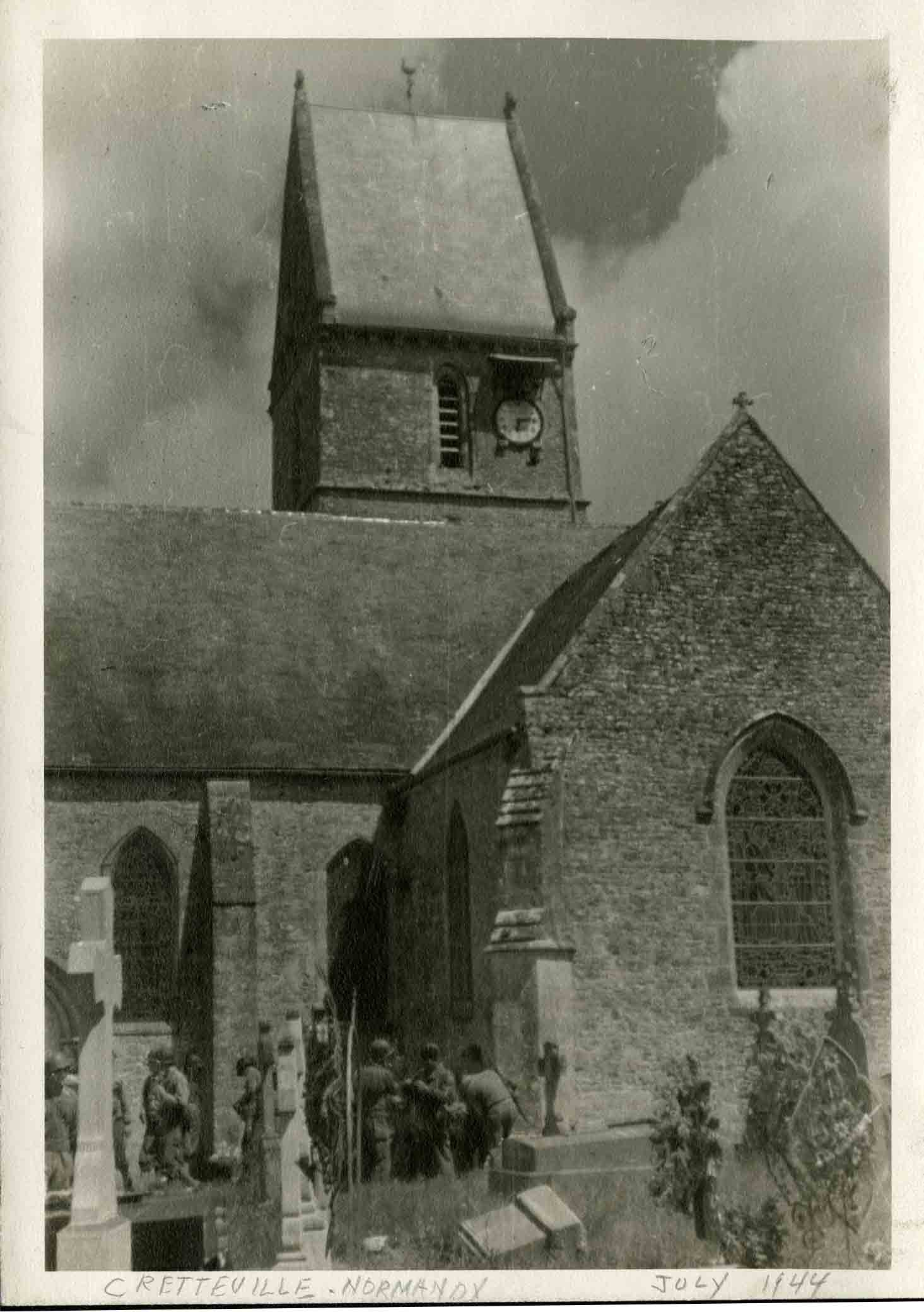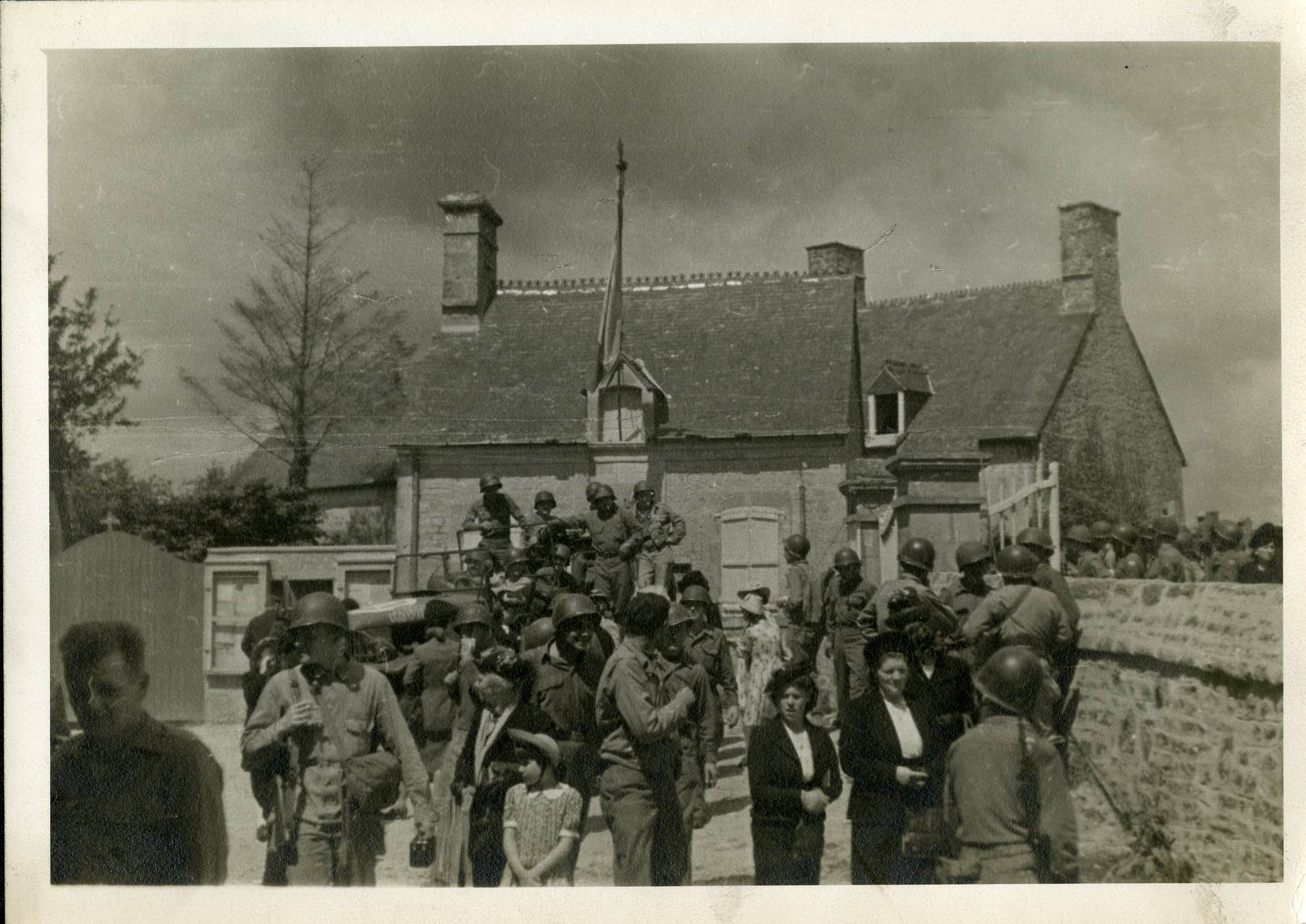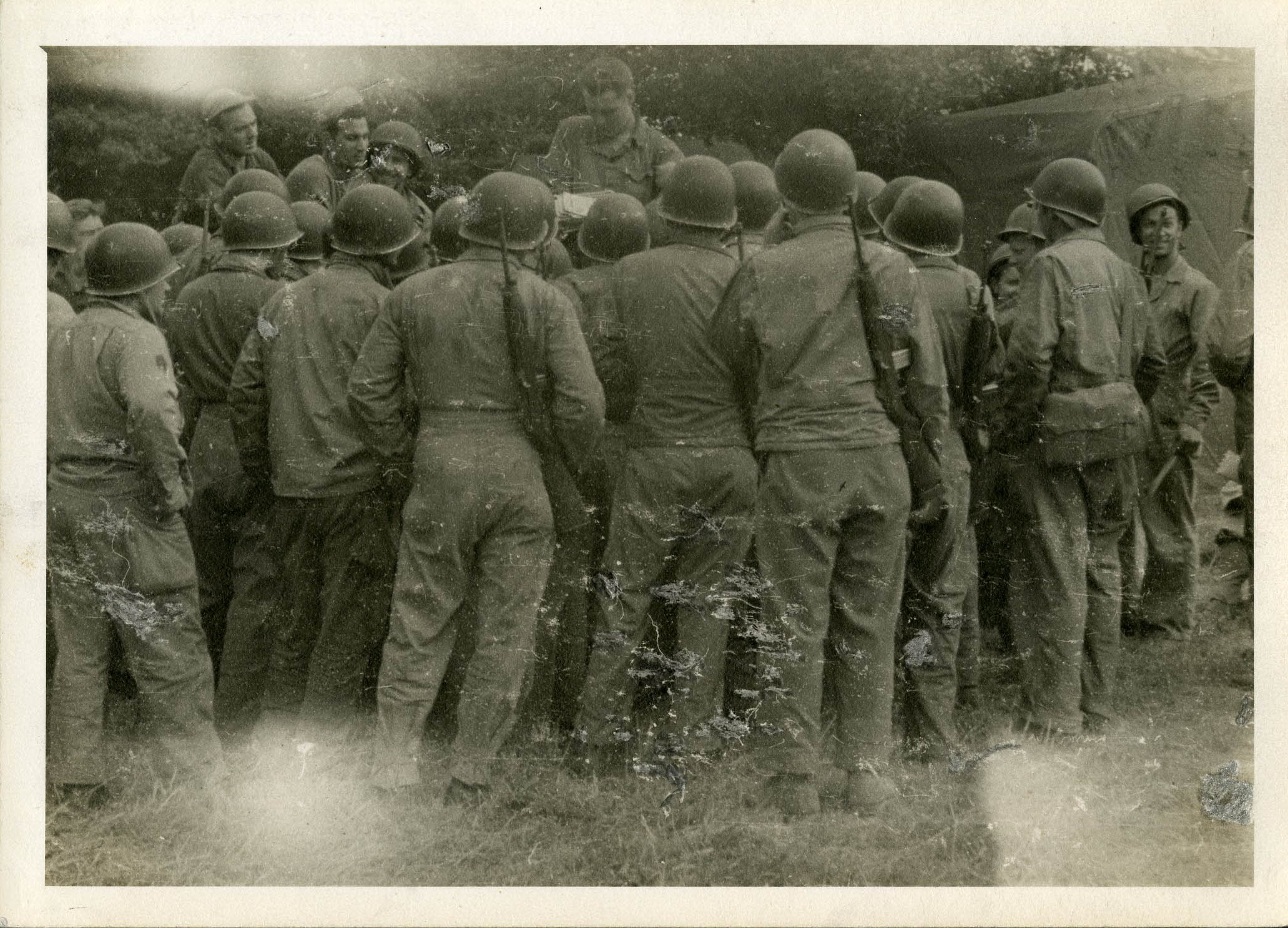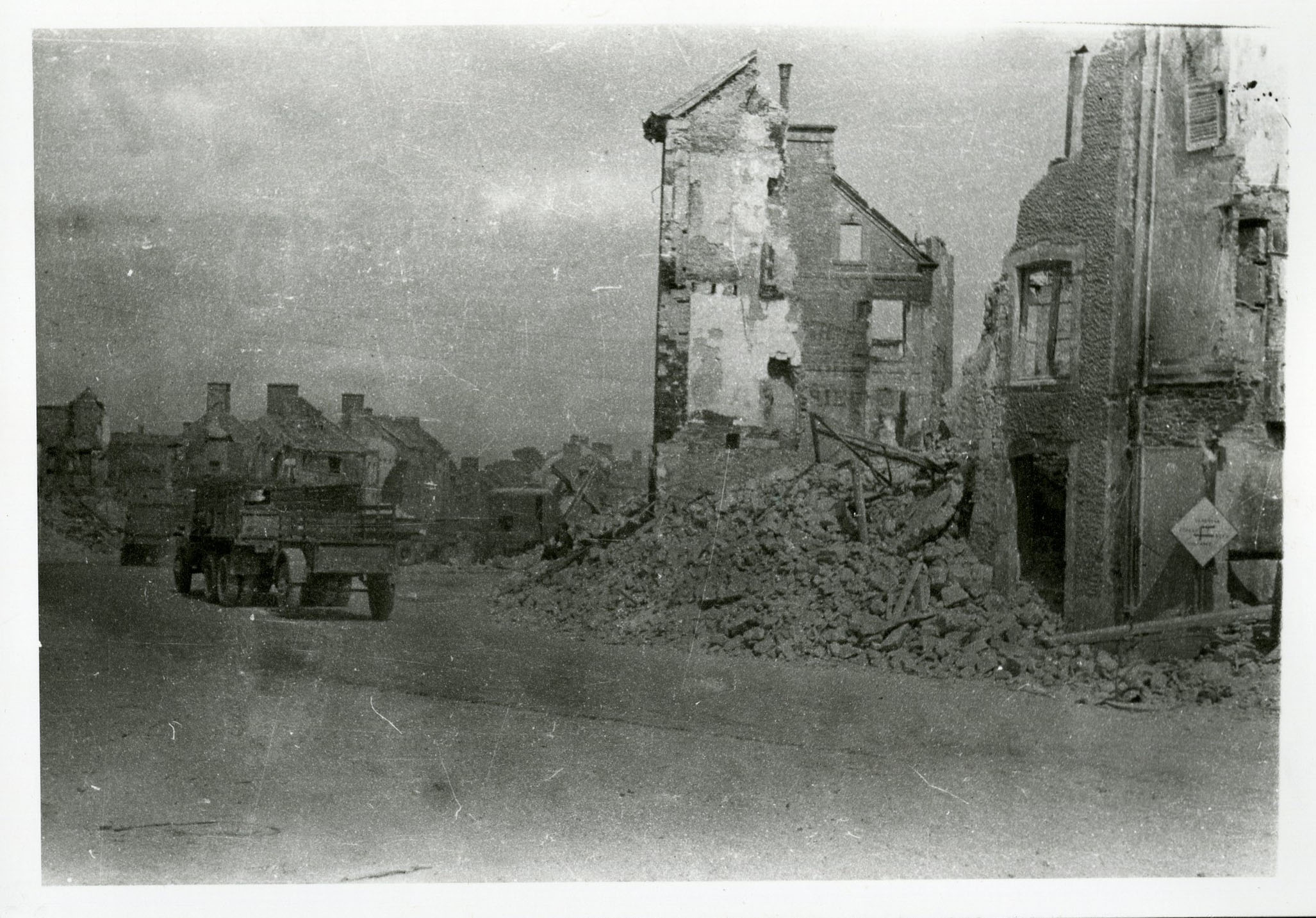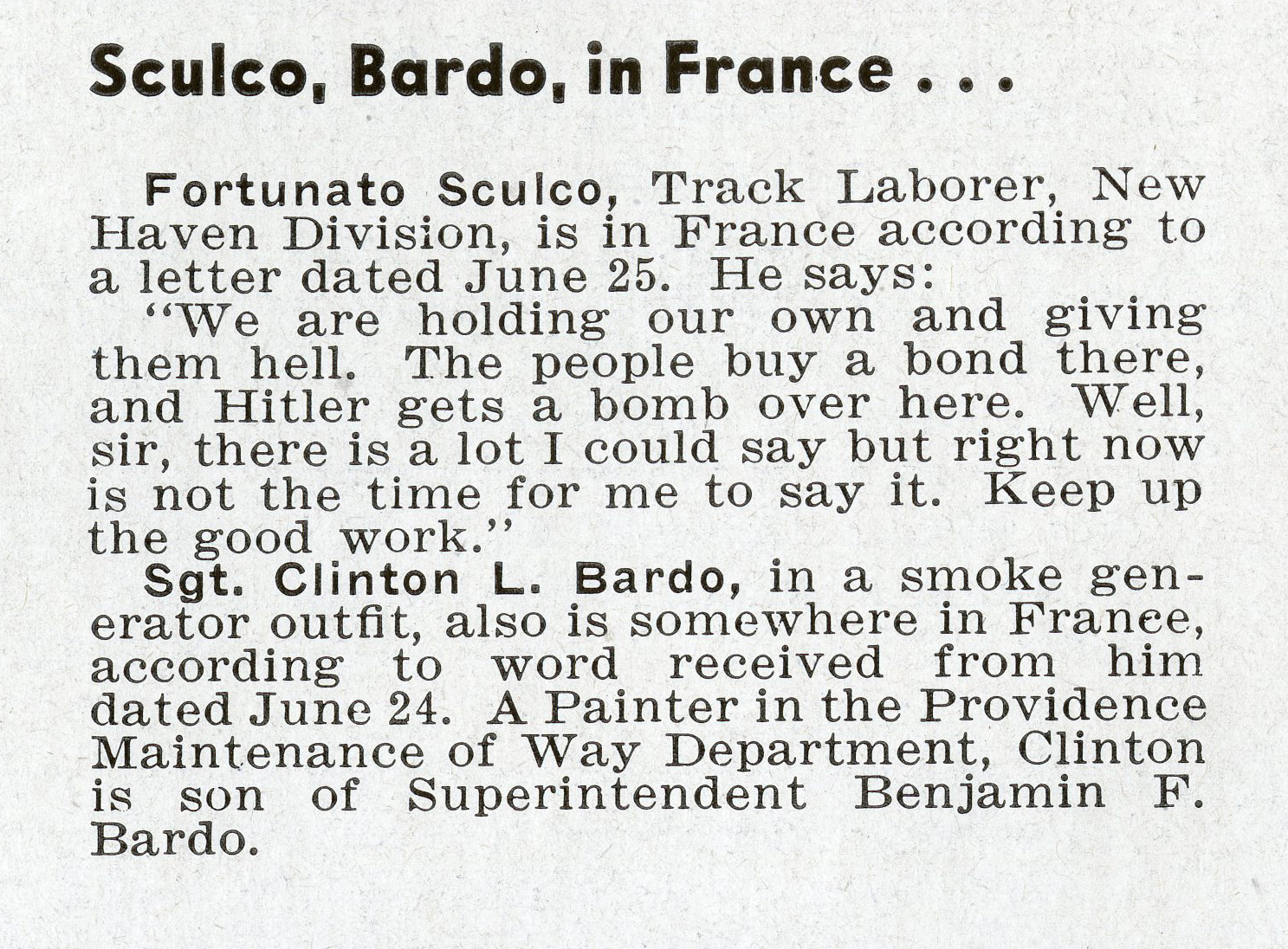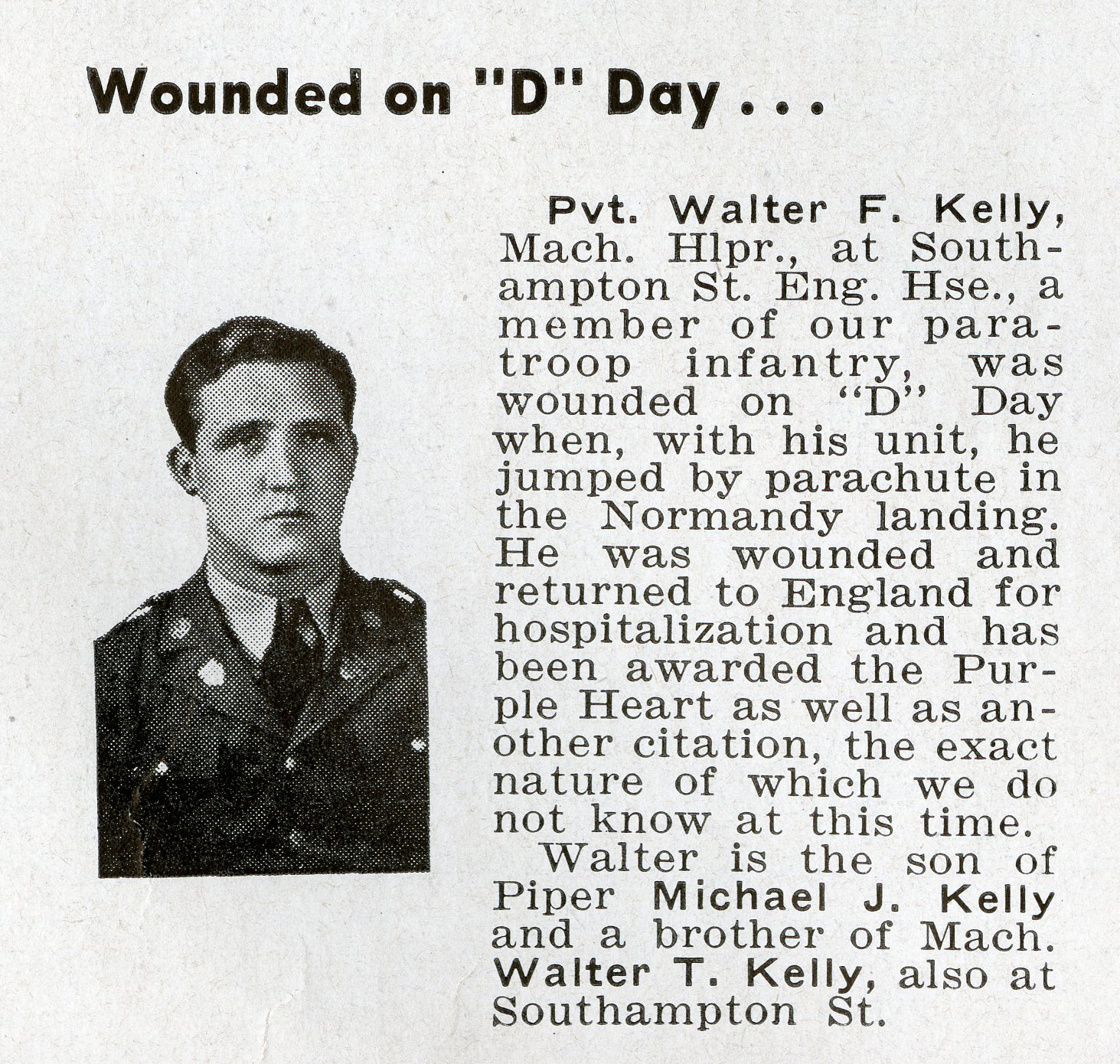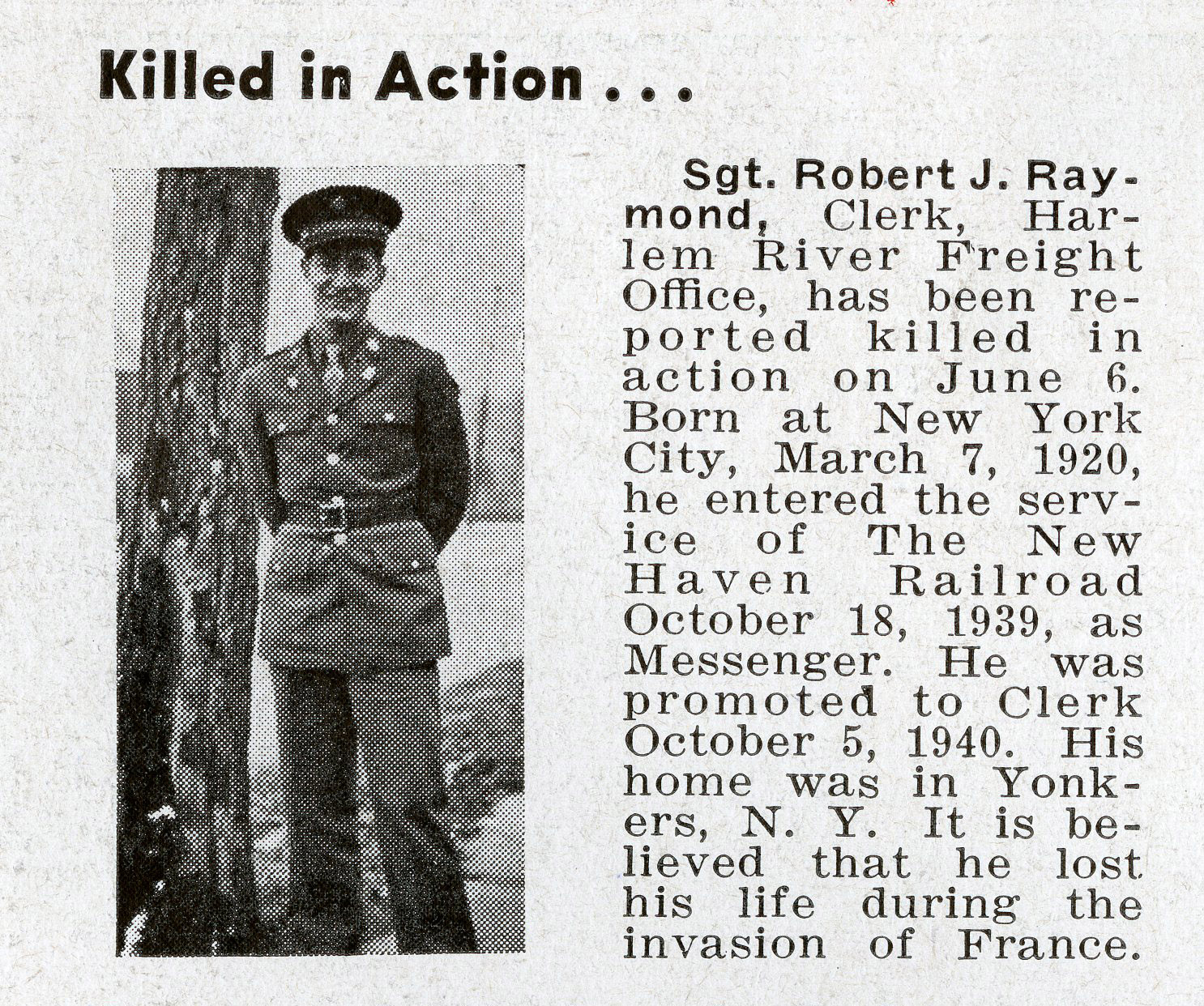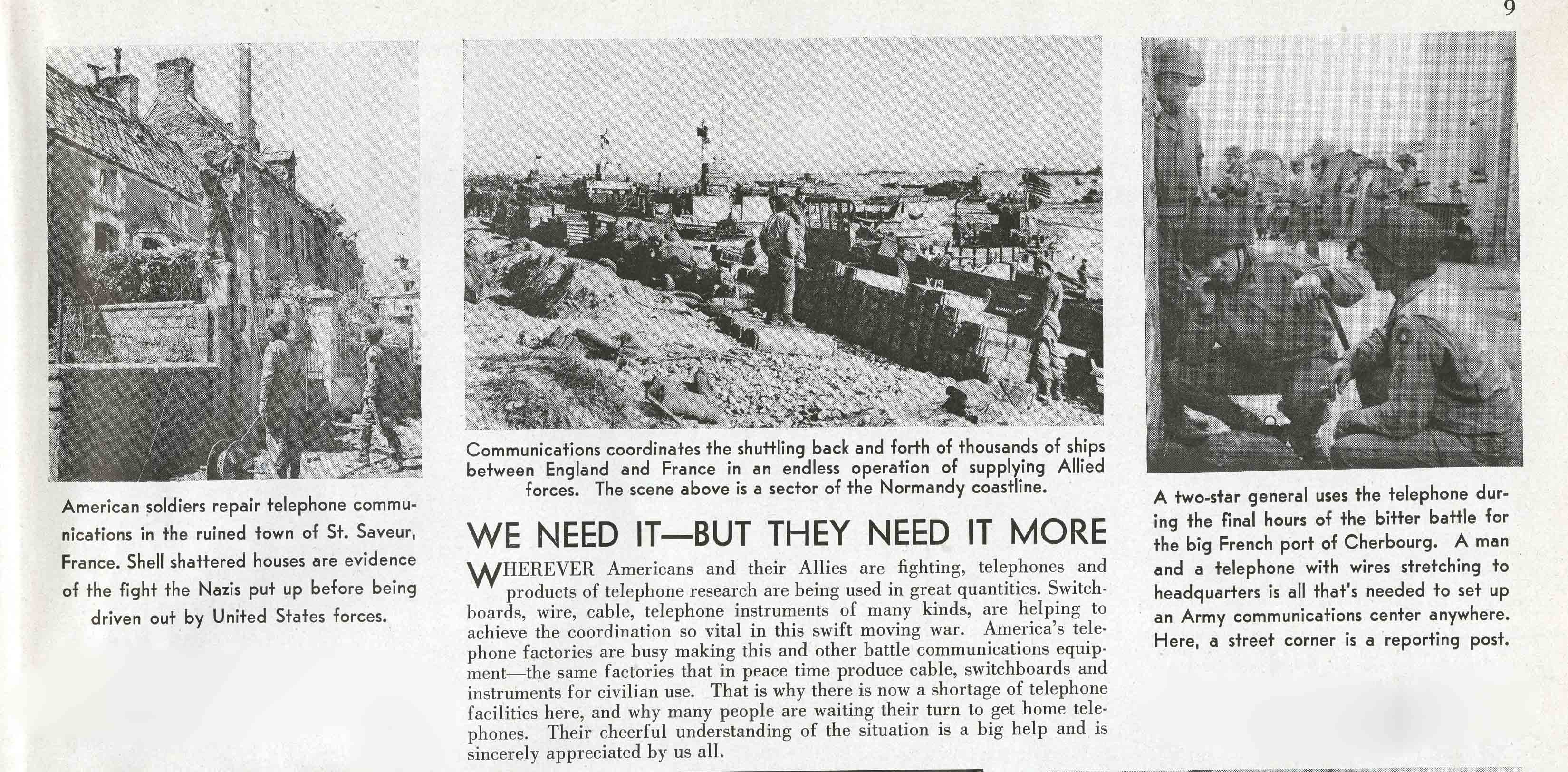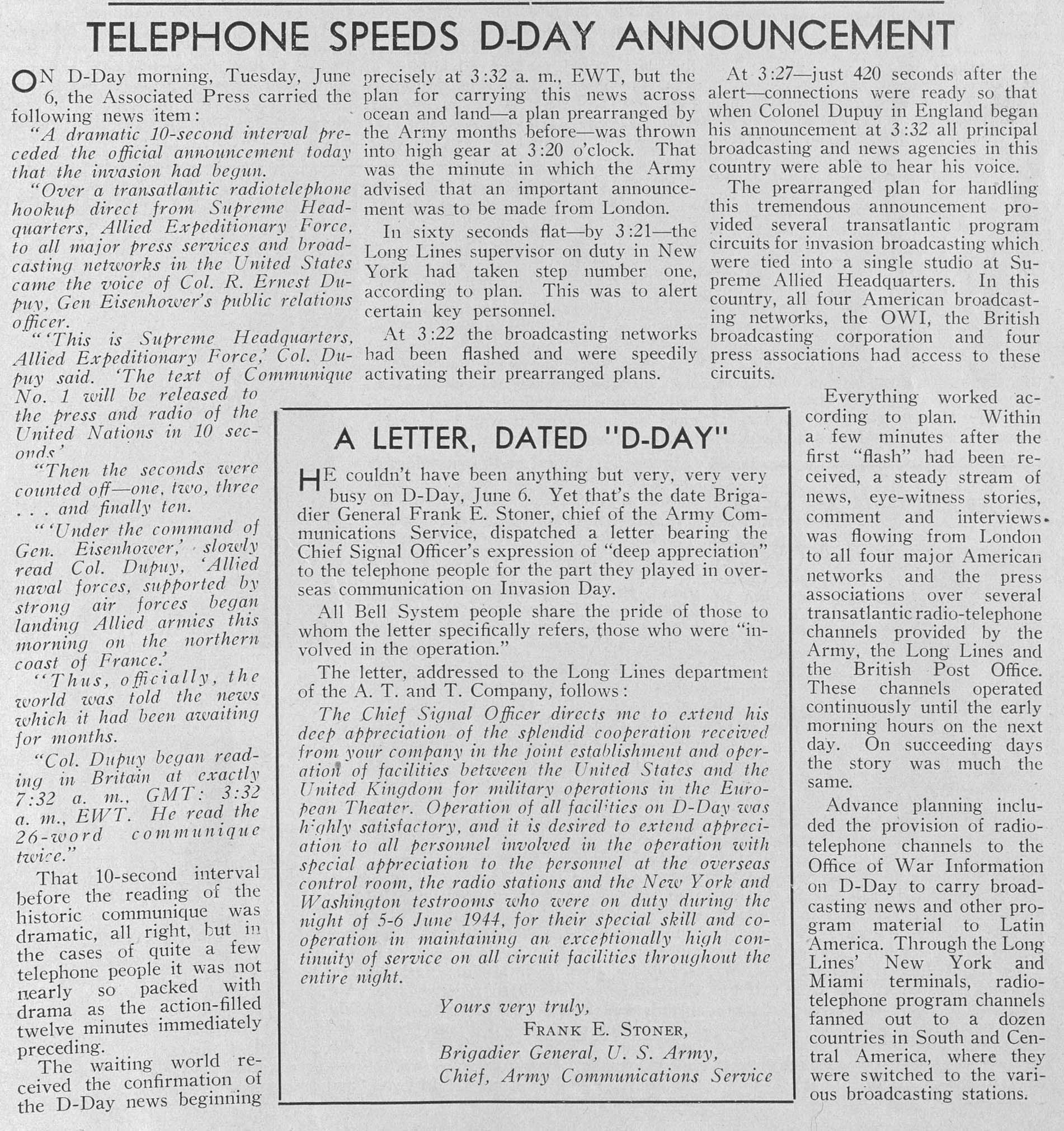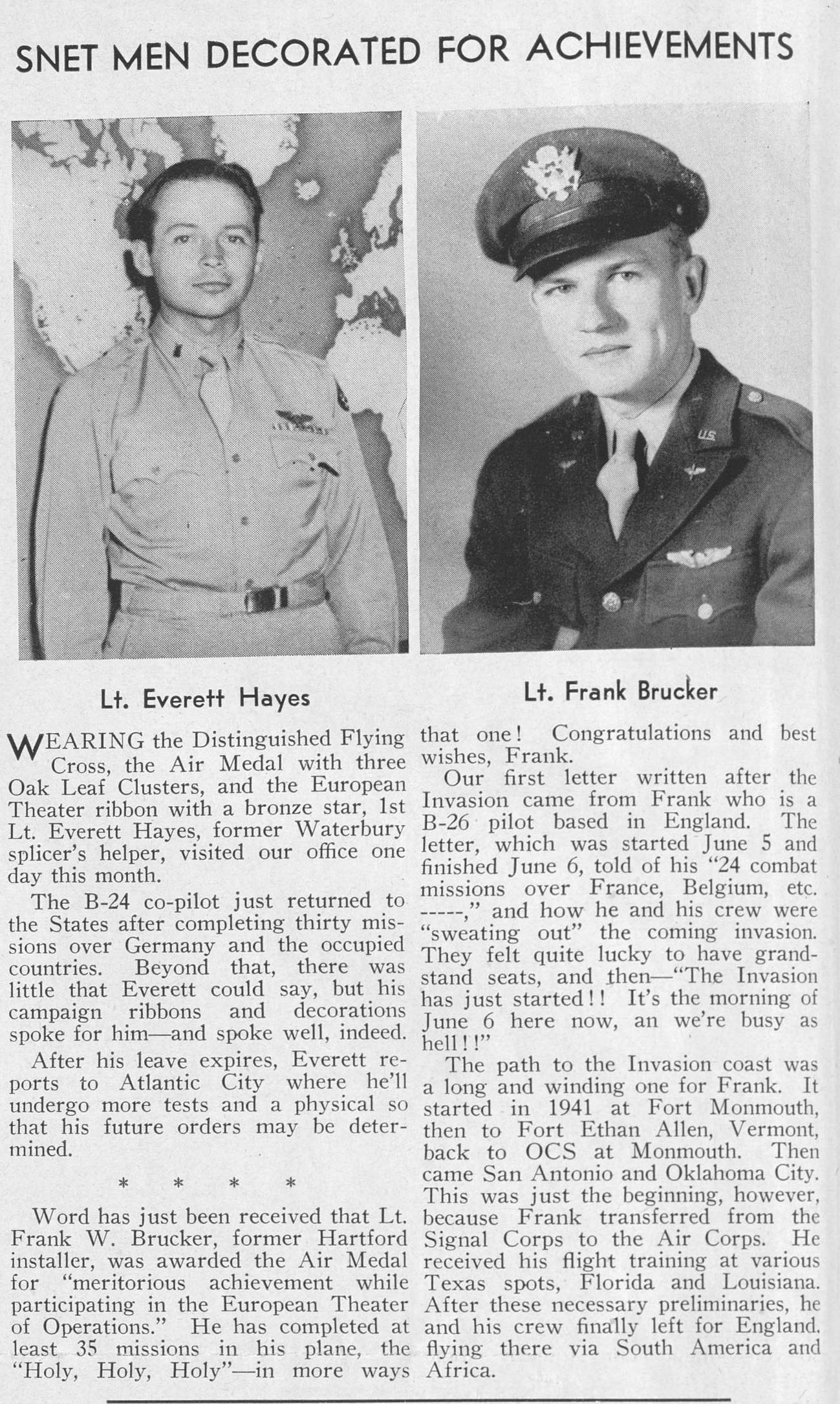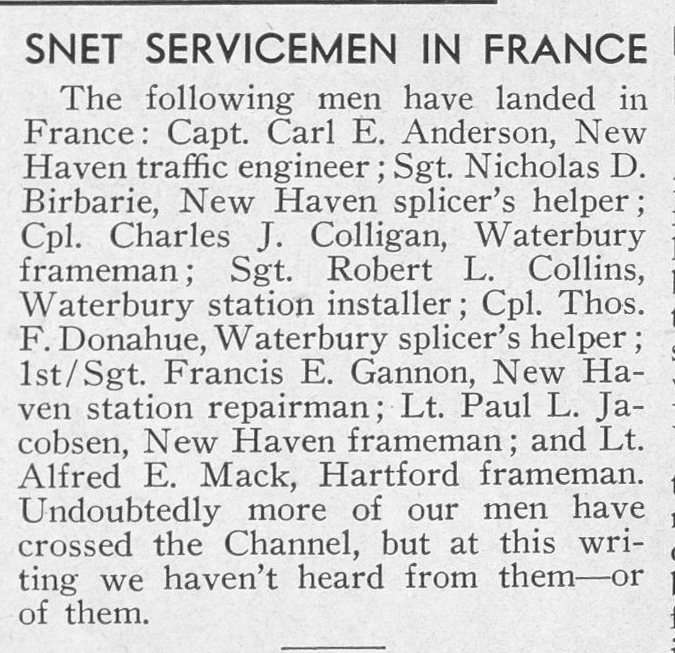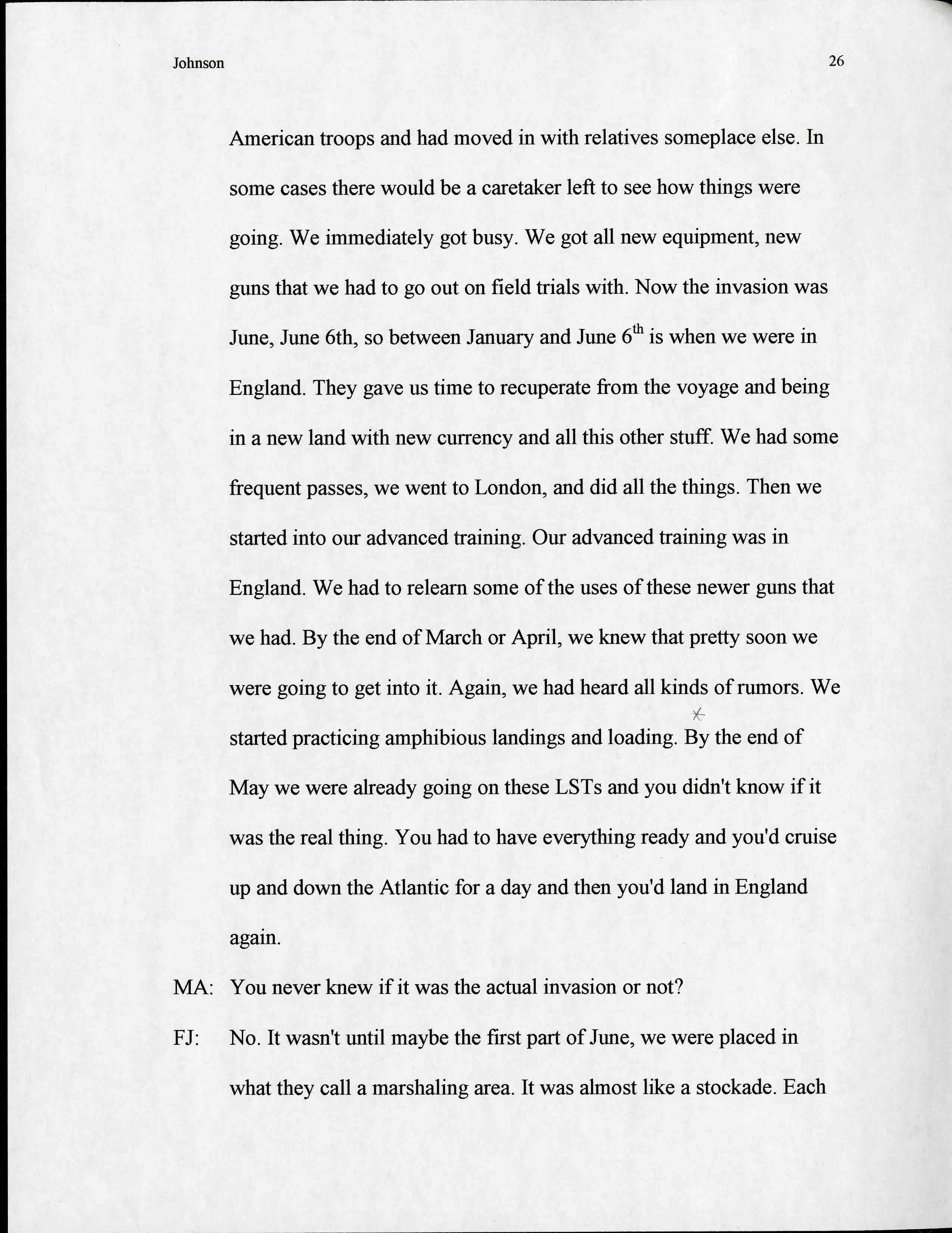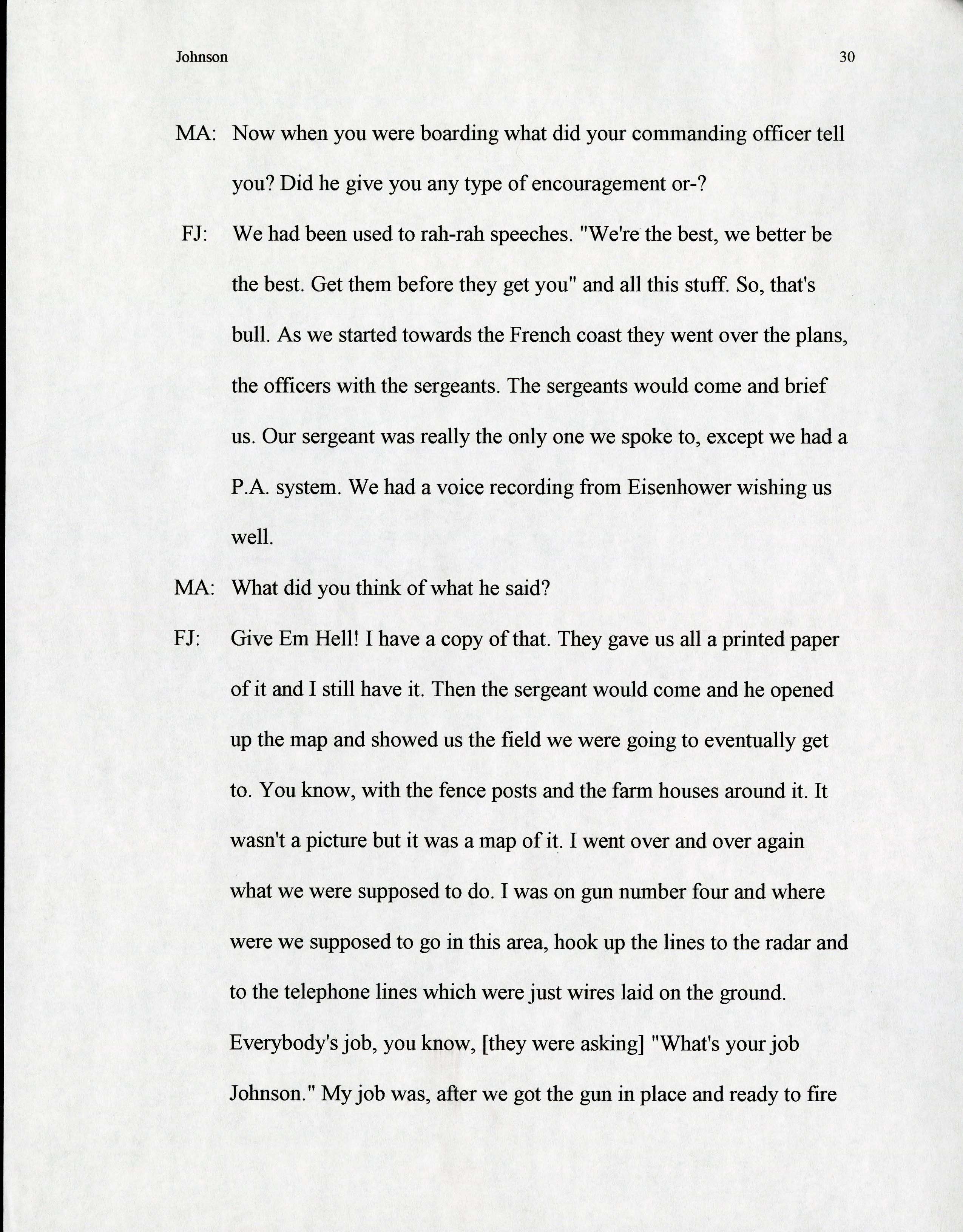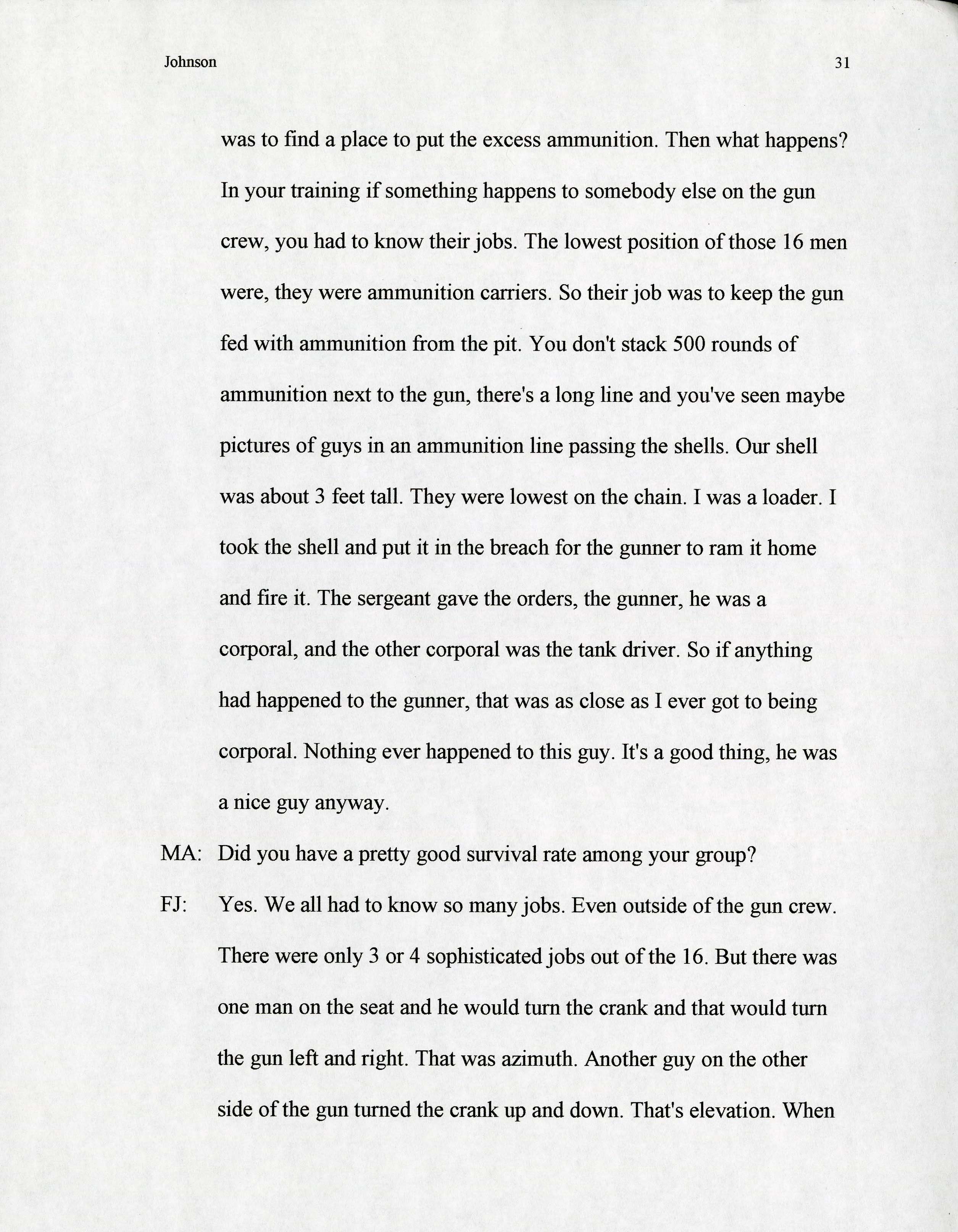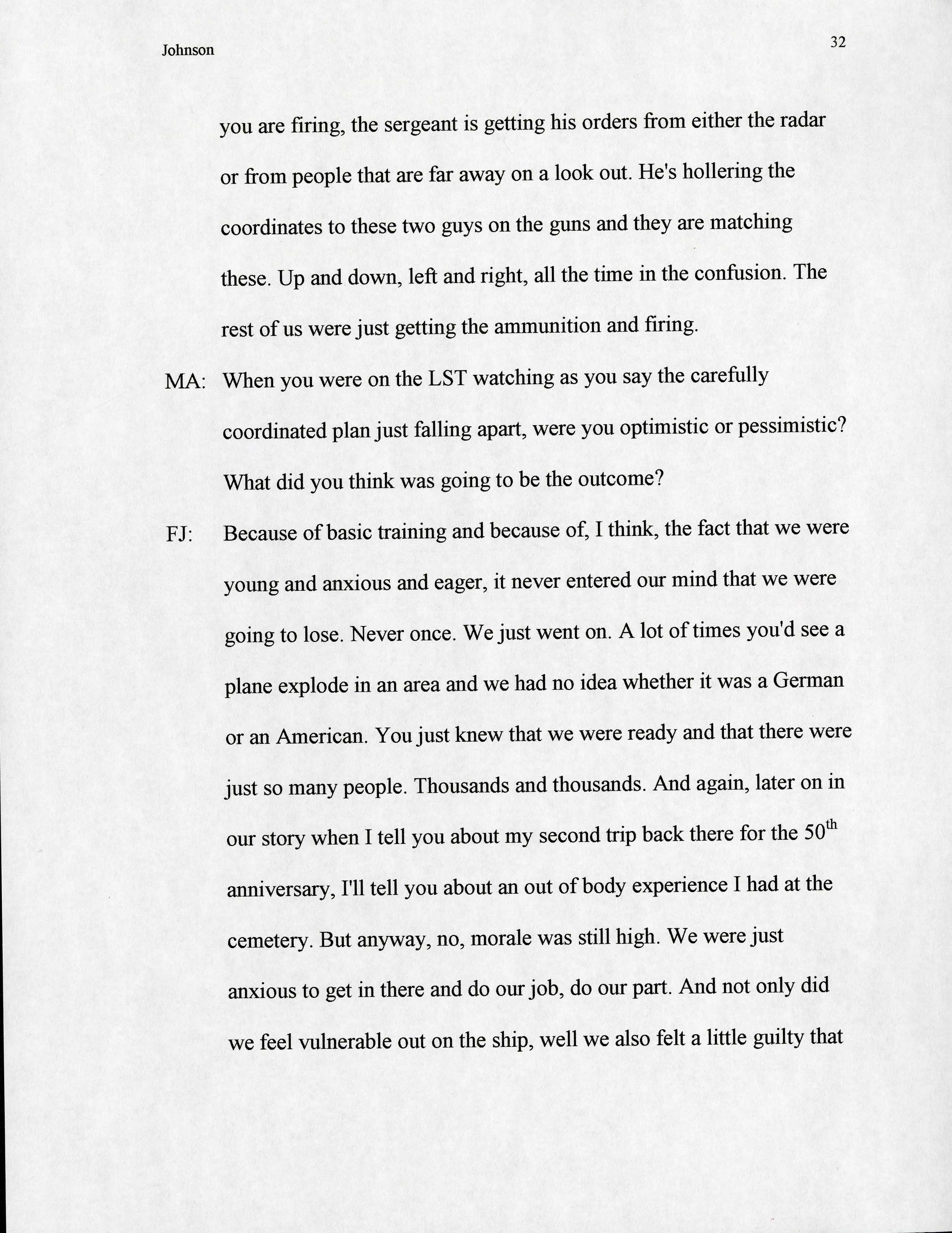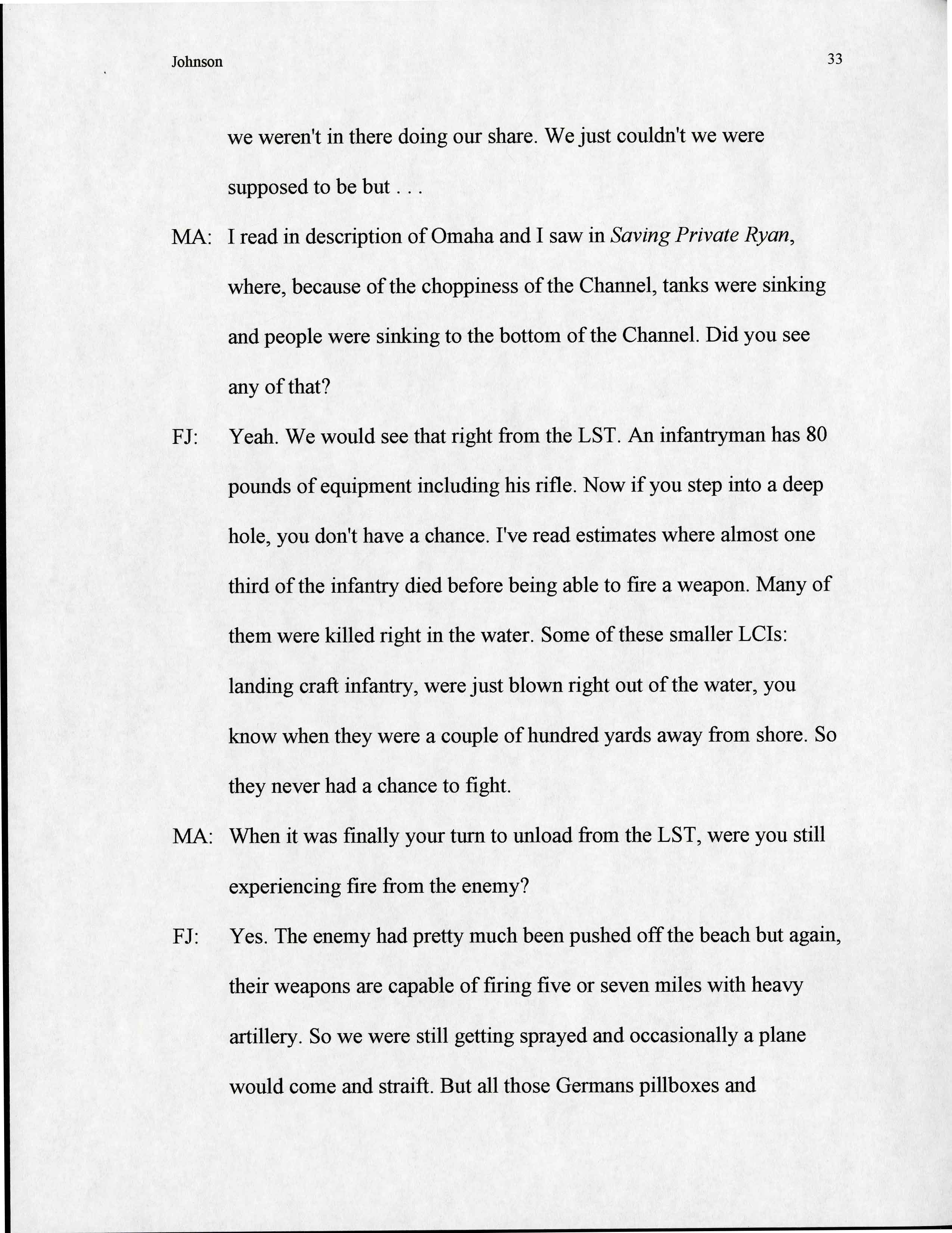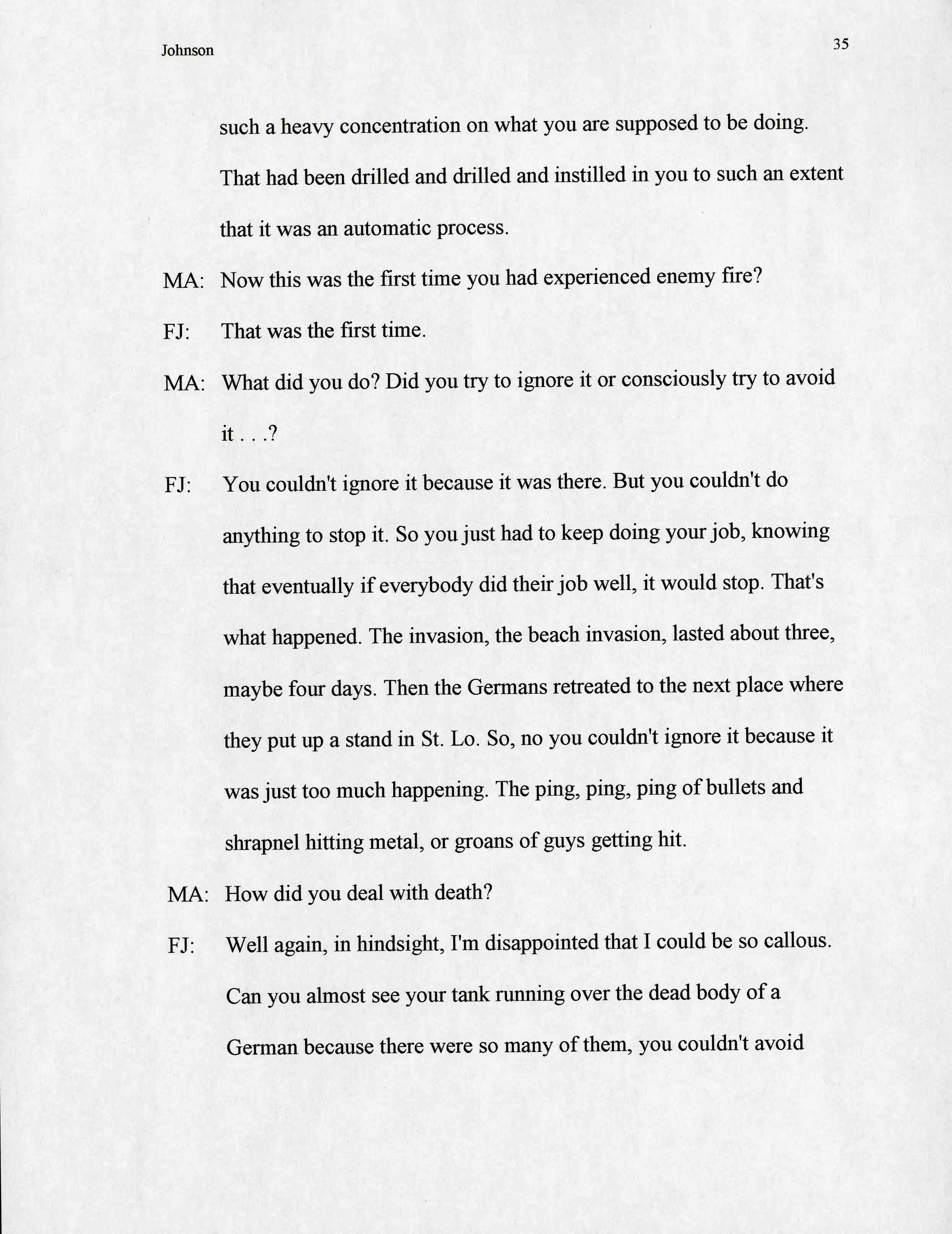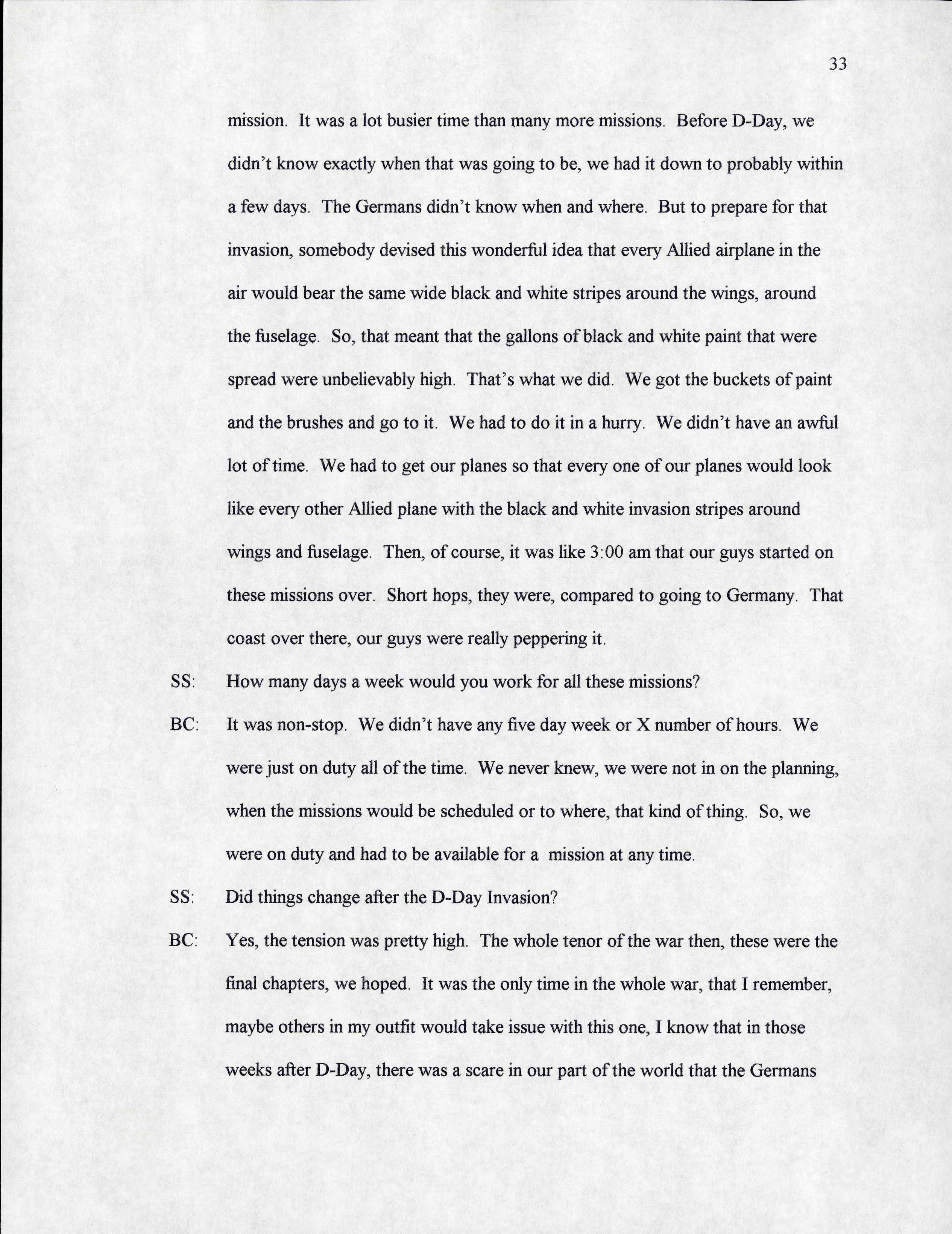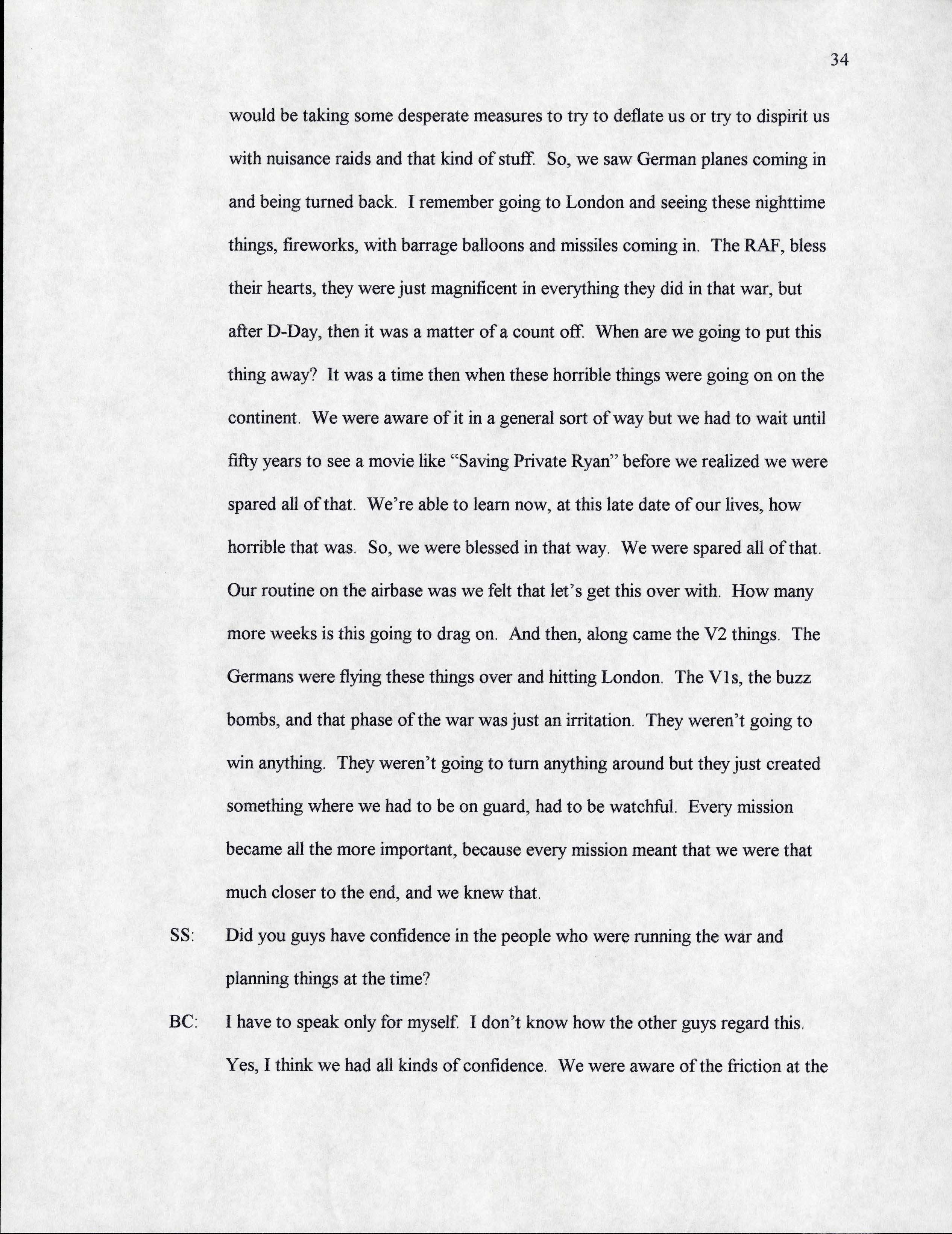On June 6, 1944, the day now known as D-Day, the Allied Forces of World War II stormed the beaches of Northern France in an effort to liberate France and Europe from four years of German occupation. Led mostly by the military forces of the United States, Britain, and Canada, D-Day’s Normandy landings were the turning point in the war that eventually led to the defeat of Nazi Germany and the end of the war in Europe in May 1945.
Archives & Special Collections has materials with references to D-Day and the Normandy Invasion although not as many as we had hoped. While we have several sets of letters by soldiers from Connecticut who served in World War II we found that many of those soldiers were either stationed on bases in the U.S. at the time or were fighting in other theaters. Those who might have been involved made little contemporary mention of the battles, a couple of them noting in their letters that they had been instructed by their superiors to specifically NOT write home about the invasion. We found that even the university records have scant contemporary mentions to the event, particularly in student publications, because by the time of the invasion in June 1944 school was out of session for the summer.
Despite these disappointments there are some items in the collections, particularly these:
Andre Schenker was a Professor of History at UConn and a world affairs commentator for station WTIC in Hartford in the 1940s. His series of programs during the years of World War II made him one of the best-known commentators in the state. One of his most notable commentaries was of D-Day, and can be heard in our digital repository at http://hdl.handle.net/11134/20002:859909662. Transcripts of this and his other broadcasts can be found in his papers.
Thomas J. Dodd served as Executive Trial Counsel at the International Military Tribunal in Nuremberg, Germany, after the war, where Nazi leaders were put on trial to answer for their crimes against humanity. In his position on the United States prosecution team Dodd gathered evidence from German records to support the arguments. Dodd’s family donated these documents, all transcribed in English, and they are now one of our most used and strongest collections. Among the files is “Shooting of Allied Prisoners of War by 12 SS Panzer Division in Normandy, France, 7-21 June, 1944” which details the acts perpetrated by the Nazis immediately after D-Day. This document can be found in our digital repository at http://hdl.handle.net/11134/20002:5466
The UConn Center for Oral History conducted interviews for the project “Voices from the Second World War.” One of the interviews is with Robert Conrad, who served in the Army Air Force beginning in 1942. Conrad was a mechanic who was sent overseas to England in the 356th fighter squadron and was crew chief on P47 and P51 fighter aircraft. In his interview, conducted in March 2000, he tells of the preparations made to the airplanes in the lead-up to D-Day.
Also in the “Voices from the Second World War” project is an interview conducted in December 1999 of Franklin Johnson, who was in the 110th Artillery, where he discusses the preparations of his unit for the Normandy Invasion, particularly the secrecy and confusion surrounding it.
Other projects in the Center for Oral History project, which can be found in the digital repository, make mention of the Normandy Invasion, including interviews by Harold Burson (http://hdl.handle.net/11134/20002:860389827), Benjamin Ferencz (http://hdl.handle.net/11134/20002:860389823), and Manfred Isserman (http://hdl.handle.net/11134/20002:860389820p). Each of these men were interviewed for the “Witnesses to Nuremberg” project but noted their D-Day experiences in their interviews. Maurice Barbaret, interviewed for the “Connecticut Workers” project, also refers to Normandy at http://hdl.handle.net/11134/20002:860307439
The Southern New England Telephone Company produced an employee newsletter – The Telephone Bulletin – that extensively reported on SNET men and women who served overseas during World War II. Following the Normandy Invasion there were several notices in the publication about employees who participated or were killed in the invasion, or served in France.
Like SNET, the New Haven Railroad had an employee newsletter — Along the Line — where the activities of individuals were noted, particularly those who served during World War II. The August 1944 issue of the newsletter notes those railroad employees who were wounded or killed in the invasion.
James W. Wall was a Boston area photographer whose work focuses mainly on the locomotives and trains of Massachusetts, primarily in the 1930s when he was a teenager. The collection also has photographs taken by Wall when he served in the Army during World War II. Little is known about Wall but that which we do know is gathered from the photographs he took. The collection includes several images taken in France, particularly in Cretteville and Mont Saint-Michel in Normandy, in July and August 1944, showing local scenes, other servicemen, and fighter planes.

